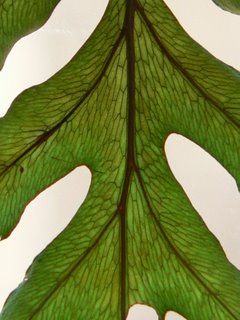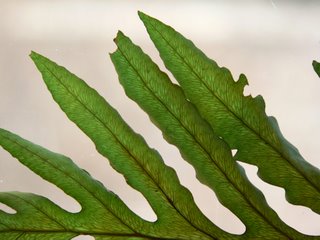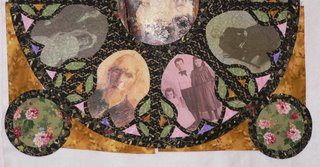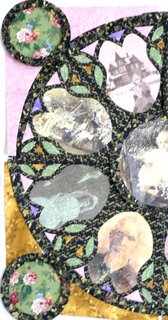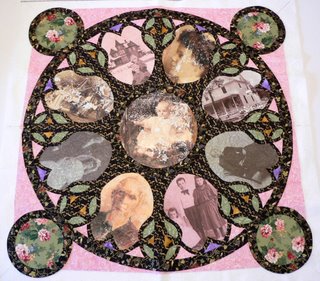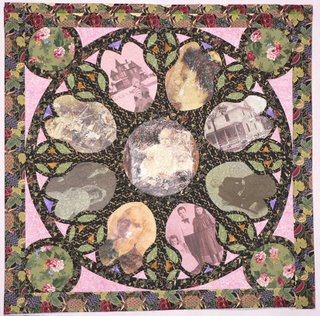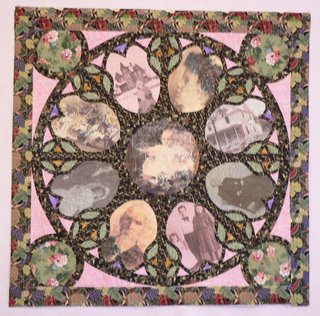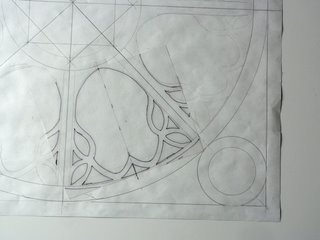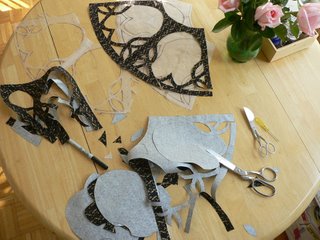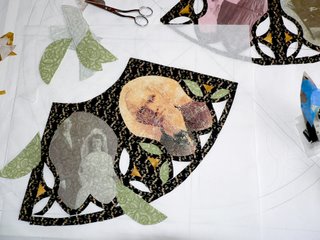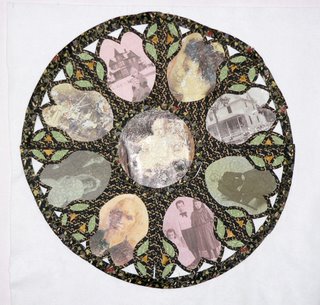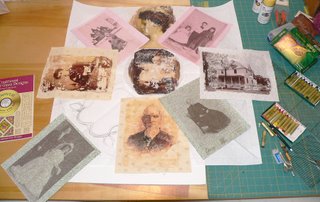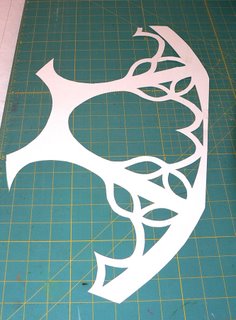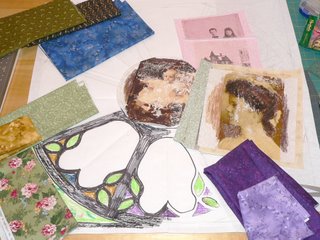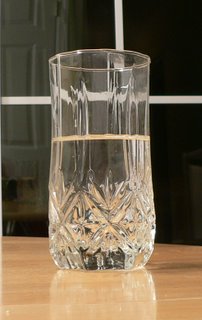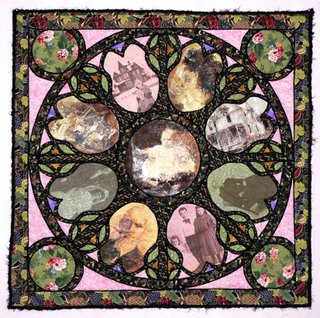
Victorian Rose Window (c) 2006 Pat Dolan 30"x30"
With shoulder surgery scheduled for tomorrow morning, I've been under somewhat of a deadline to complete the FabriQuilt, Inc. booth quilt ahead of time since I don't know exactly when I'll be able to use my sewing machine again. Therefore, it was vital to complete the quilt by today!
And here are the final steps in its completion:
Step 23: Cording
I decided not to do any traditional quilting on this quilt, but to quilt it by applying a cording of thin, curly, black yarn to delineate the "lead" of the stained glass window. Here is a shot of my sewing machine and yarn set-up. The yarn is in a bowl and threads up and around the back of my Bernina 1030 (which has the best setup for cording!), around to the front and down to the cording foot and needle.
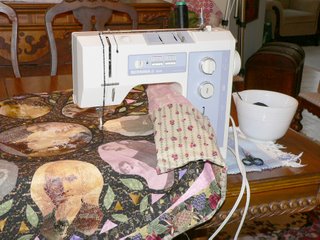
And a close-up of the cording setup.

Step 24: Binding/Edging: Once the cording was done, it was time to determine how to finish off the outside edges. I selected two different weights of yarn and crocheted a long chain which was then stitched to the edges of the quilt for a binding.
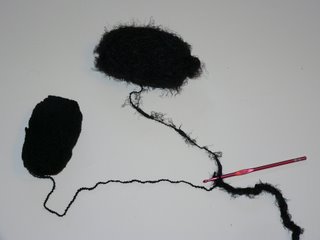
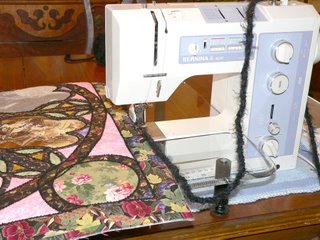

Step 25: I always label my quilts and have recently decided to print my labels on the computer, then fuse and sew the labels in place on the back of the quilt.
Close-ups:
Note the photo-transferred images - I went back in yet again and darkened certain areas that didn't seem to blend well enough into the whole. This time I used watercolor paint directly out of the tube applied with a watercolor brush. The effects satisfy me, at last.


Now it's time to mail the quilt off to the Kansas Art Quilters group. From there it will go to the FabriQuilt, Inc. who will then use it in their booth at the Spring Quilt Market in Minneapolis, MN in early May. Alas, it's for shop owners only, so this quilt will never have much of a public viewing. Still, it was a great challenge and I am satisfied with the completed quilt.



